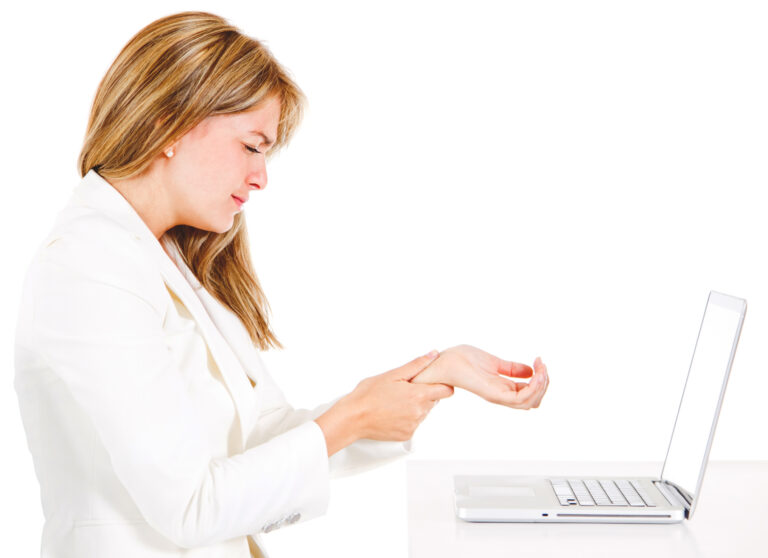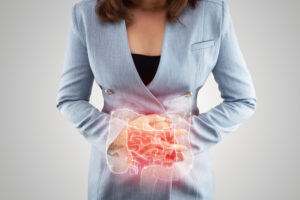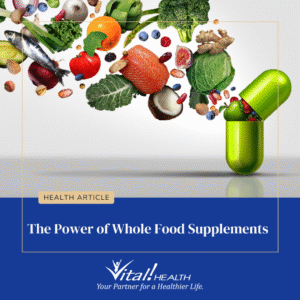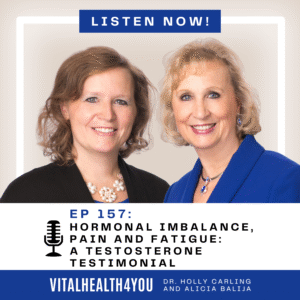Carpal Tunnel Syndrome (CTS) is a condition that is increasing at alarming rates. Twenty years ago CTS barely existed. Not just because it didn’t have a name, but also because it rarely occurred. So why now? What are we doing, or not doing that is causing this condition to exhibit itself and cause pain to so many sufferers?
Carpal Tunnel Syndrome, also known as Repetitive Strain Injuries (RSI’s), is a condition commonly associated with jobs that require a continuous, repetitive motion over periods of time. Professions with high incidences of repetitive movements include cashiers, data entry techs, meat cutters, dental hygienists, musicians and line workers. The types of movements associated with CTS and RSI’s are twisting, grasping, turning or vibratory. Even some sports include repetitive movements such as golf, tennis, archery, and rowing.
So, what is Carpal Tunnel Syndrome? At the junction of the palm of the hand and the wrist is a band of tissue which creates a “tunnel”, under which lies the median nerve. Since it is a tight area, any inflammation or swelling in that tunnel creates pressure on the nerve, and subsequent pain. So any injury or illness even, that contributes to swelling or pain in that area contributes to this condition. Illnesses such as sprains, leukemia, rheumatoid arthritis, diabetes, thyroid conditions and even PMS (swelling) can contribute.
The question I always ask is WHY? Why now, and why not 100 years ago? What has changed? Man has had repetitive jobs for thousands of years without evidence of having had carpal tunnel syndrome. So why has it become such a big problem now, and why only recently to the degree that it has? There are several causes of carpal tunnel because there are several things in our lives that have changed. One thing that has changed is our diet. We no longer eat nutritious foods. We avoid eating the very foods that we need in order to heal. We eat the foods that inhibit healing. Is it any wonder that simple swelling creates long-term pain? The body needs certain raw materials in order for it to heal. Some of those include essential fatty acids, protein (not just cooked protein, but raw as well), and minerals. Multivitamin/mineral complexes don’t contribute to the healing (unless they are from whole foods), and if anything, add to the problem. Avoidance of fat and eating low fat diets also contribute to the problem. Vitamin deficiencies and many other nutritional influences can be blamed as a causative factor or as a factor which inhibits the healing process. Sugar is one of those foods that slow the healing, as does coffee.
The second change is that we have become sedentary. Instead of using our whole body in working the land, as in past decades, we are in jobs that sit or stand and use few of our muscles on an ongoing basis. We use limited muscles, and if those involve the arms, as in repetitive motion jobs, those muscles get strained. We need to exercise our body as a whole to keep the circulation moving and all of the supportive muscles strong. Those muscles that need strengthening also include the muscles in the arms, since they have generally weakened as well.
What else has changed? How we hold our head. We spend many more hours in front of a T.V., at a computer screen or on the telephone. Certain head positions held for long periods of time can contribute. Keeping the head cocked to the side with a phone between ear and shoulder can cause swelling of the nerves in the neck. These nerves travel down from the neck to the hand and if swollen will mimic CTS. Other poor positions include keeping the head rocked back watching a screen or something too high, or even the neck bent forward for too long. Sleeping in the wrong position with poor head position or arms overhead can also contribute, or at very least, inhibit healing.
Good remedies, which are non-invasive should be the first things sought before submitting to surgery. Although surgery has had its successes, it has also had its failures. Acupuncture, along with some good nutritional counseling has been quite successful in alleviating Carpal Tunnel Syndrome. Acupuncture works by reducing inflammation, swelling and pain. It encourages the body to heal itself. It treats the causative factors, thereby reducing the possibility of the condition recurring. Acupuncture helps to relieve the pain, eliminate the numbness and tingling sensations, improve mobility, accelerate the healing process, and along with some exercises, helps to regain strength.
©2005 Holly A. Carling, O.M.D., L.Ac., Ph.D.







